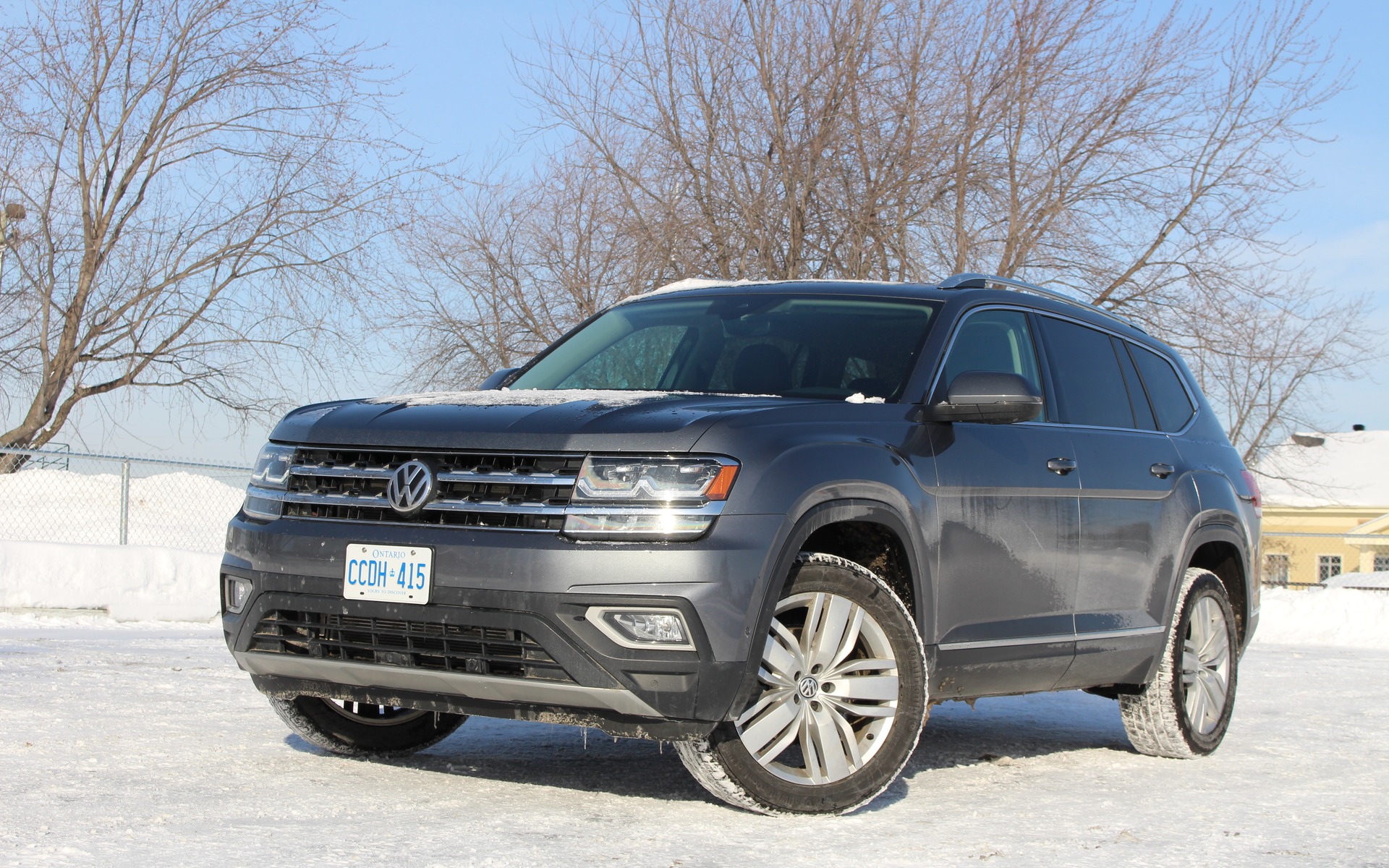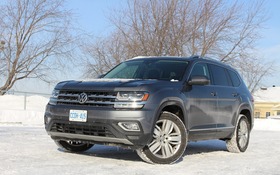2018 Volkswagen Atlas: Conquering America

| Strong points |
|
|---|---|
| Weak points |
|
Although the Volkswagen Touareg was an excellent midsize SUV, it might have been a little too European—and expensive—to attract North American families into the brand’ product portfolio. Based on the same architecture as the Porsche Cayenne and Audi Q7, the Touareg’s bones were solid, its off-road capacities were good, and overall, the vehicle had a premium feel and drive.
Turns out that wasn’t really what the North-American market wanted. It wanted interior space, rugged looks and a more affordable price tag. By introducing the new-for-2018 Atlas, that’s exactly what Volkswagen is offering, and sales have almost quadrupled compared to those of the Touareg. We’re still far away from the Toyota Highlander, the Kia Sorento and the Ford Explorer that are selling about twice as well, but during the first six months of 2018 in Canada, the Atlas has pulled away from established rivals such as the Chevrolet Traverse, Mazda CX-9 and Nissan Pathfinder.
- Also: No T-Roc or T-Cross: When Will Volkswagen Finally Offer a Small SUV?
- Also: 2019 Volkswagen Arteon Finally Confirmed for Canada!
The 2018 Volkswagen Atlas is built on a stretched version of the company’s MQB platform, which also underpins the Volkswagen Golf, Jetta and Tiguan. It’s a solid base, although it doesn’t feel as stiff in its mission to support this seven-passenger ute. Nevertheless, the Atlas scores with both a comfortable ride and good driving dynamics.

It also conceals its size very well. The overall design is massive, highlighted by the oversized wheels and muscular stance of our test vehicle, although a quick glance might not be enough to distinguish it from the new Tiguan—which admittedly has grown in size for the 2018 model year. The SUV’s turning diameter is also good at 11.6 metres, so parking this rig is surprisingly easy as well.
In Canada, there’s a base trim of the Atlas that’s equipped with a turbocharged 2.0-litre four-cylinder engine and a front-wheel drivetrain. However, the vast majority of buyers should skip that combination and go for the 276-horsepower, 3.6-litre V6 and 4MOTION all-wheel drive. It provides much better performance and a good towing capacity of 2268 kilograms (5000 lbs.). However, fuel economy isn’t spectacular, as we averaged 13.0 L/100 km during our winter test.
It’s actually unfortunate that the 235-hp, 2.0-litre engine can’t be matched to the AWD hardware, because it would make the Atlas more efficient around town. The Mazda CX-9, the Subaru Ascent and the Ford Explorer are all available with small-displacement powertrains, and although they’re not the speediest SUVs out there, they can do the job for many people.
The interior design is tidy, not too extravagant, with some cheap plastics here and there, but totally functional with straightforward layouts of buttons and switches for climate and audio systems. The options list includes a configurable 12.3-inch, totally digital driver instrument panel that brings a nice touch of sophistication. The infotainment system includes an 8.0-inch touchscreen that’s quick to react to finger poking, while Apple CarPlay and Android Auto integration are standard. The Fender stereo sounds great, too.
As usual in Volkswagen products, the front seats are shaped for comfort over long drives, and although the optional second-row captain’s chairs are a little flat, occupants enjoy plenty of room to stretch out. There’s ample space for two passengers in the third row, and accessing them is actually not that difficult. For hauling family and friends, the Atlas is among the best in the three-row, midsize SUV segment. There are plenty of USB ports for keeping everyone’s gadgets charged up, and higher trim levels like the Atlas Highline we tested includes heated front and second-row seats, a heated wheel, ventilated front seats, a power panoramic sunroof and rear-seat climate controls.

As for cargo space, the 2018 Volkswagen Atlas’ square shape makes it surprisingly accommodating, despite its maximum cargo volume of 2741 litres, which places it behind the class-leading Traverse. The load floor is perfectly flat and the retractable cargo cover can be neatly stored underneath.
Pricing starts at $35,690 for the base, front-drive trim level before freight and delivery charges, but choosing AWD means an Atlas will run at least $40K. Our Highline tester rings the case register at close to $50K. The Atlas is competitively priced—actually, a little more expensive than a Nissan Pathfinder, Ford Explorer, Toyota Highlander or Subaru Ascent, among others—unlike the five-passenger Touareg which started at more than $50,000.
There are several midsize SUVs to choose from, and some are excellent choices. The Mazda CX-9 is efficient and boasts a seductive design; the Chevrolet Traverse is the most spacious of all and offers superb ride quality; the Honda Pilot combined roominess and reliability. Where does that put the Atlas? Simply put, it does everything right—expect maybe consume too much fuel—without knocking anything out of the park. That’s enough to justify its success as a competent family vehicle that Volkswagen fans will easily appreciate.











